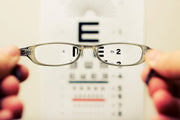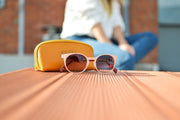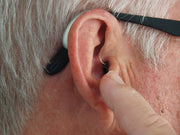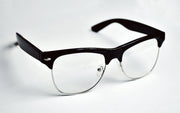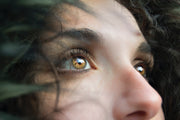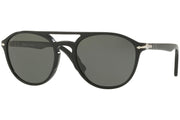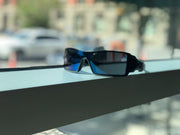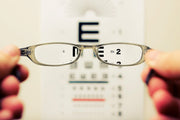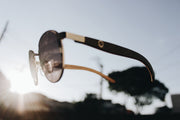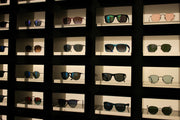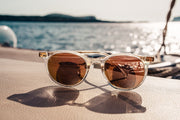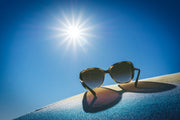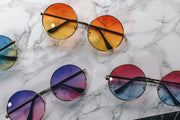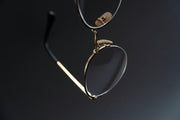Sunglasses are selected as fashion accessories to add more accents to their own style. There are several benefits to wearing glasses with a polarized coating. For example, It helps you limit the harmful effects of sunlight.
Almost every person has at least one pair of polarized sunglasses, but not many know How To Tell If Sunglasses Are Polarized. This verification is not difficult and does not necessitate the assistance of professionals or gadgets, as you imagine.
There are a few ways to tell if your glasses are polarized. We will show you right below.

The "Look At Water" Approach.
Polarized sunglasses can help you reduce the glare of direct light or its reflection on surfaces like glass doors, automobile windshields, and even water's surface to help you see things better.
Regular glasses only allow you to view the top of the water; however, sunglasses with polarized lenses will enable you to see beneath the surface. You can even see the fish underneath the lake since it is not influenced by the glare from the light on the water.
Therefore, if you want to find out whether you have polarized spectacles or not, take them out and use them to look at the water under the sun or bright lights. You will see the difference.
The Sticker Approach
This method helps you to see if your glasses are polarized, particularly when purchasing a new pair to use. On the lens of new sunglasses, some manufacturers add a testing sticker. What you have to do is to tilt the lens to a 60-degree angle to verify.
The sticker will then progressively darken, indicating a pair of polarized sunglasses or vice versa.
The "Check The Label" Approach.
Some companies take it one step further by carving "polarized" into the bottom edge of the left glass, in addition to putting a label to the surface of the glasses to confirm the legitimacy of a pair of polarized glasses. Even if the glass has been used for a long time, you can turn it up to verify if it has a polarization feature with this mark.
The Test Card Approach
A quick way to test sunglasses is by using polarized lens cards. This card is available from various eyewear retailers or in internet stores. An image should appear on the card when viewed through truly polarized lenses when using this method.
If your sunglasses are without a polarizing coating, this card will not show any image.
The Single Pair Of Glasses Approach
Here are some steps to execute this method to make sure your glasses are polarized.
Step 1: Look for A Surface Capable Of Producing Glare When A Bright Light Hits It.
To use this approach, you'll need a surface that can reflect light, such as a mirror or glass. This surface needs to reflect glare even at a distance of 2 to 3 feet (60 to 90 cm). To create glare, you can add a flashlight to your setup or simply turn on overhead lights and let them shine on a reflective surface.
Step 2: Keep Your Glasses 6 To 8 Inches Away From Your Eyes And Hold It Straight In Front Of The Eyes.
Hold it in front of your eyes so that you can verify the difference. The distance is adjustable. Depending on the lens size in your glasses, you can move this distance closer.
Step 3: Turn The Sunglasses To An Angle Of 60 Degrees.
In this step, you will need to turn your glasses to a 60-degree angle. It should be in the position that one side of the lens is slightly higher than the opposite. Because manufacturers only polarize sunglasses in a certain direction, rotating them can improve the effectiveness of the polarization.
You may need to change the tilt of the glasses somewhat depending on how the glare hits the reflective surface to see a difference.
Step 4: Examine The Lens And Check For Glare On the Glass.
If you are using a polarized lens, you will notice no glare on the lens surface. In actuality, the glass will appear to be very black or have a tiny glare, but there will still be light on the surface.
When you are unsure about the polarization effect, move the glasses and look through it several times to compare the sight when you view with regular eyes and with sunglasses.
The Two Pairs Of Glasses Approach
Using another pair of polarizers to check the polarization of your glasses is very simple, just follow these steps:
Step 1: Use A Pair Of Glasses That Are Polarized To Check.
You can use this method when you have a pair of polarized glasses in your hands or are in a place with a lot of glasses, such as a store. This is because you can compare the difference between the two and verify your glasses. Again this test only works when there is another pair of polarized sunglasses available.
Step 2: Maintain A Comfortable Space Between Your Polarized Glasses And The One In Front Of You.
Make sure the lenses are roughly 1 to 2 inches apart in your eye line. The suspect pair of sunglasses should be nearest to you, while the polarized pair should be further away.
Ensure the lenses don't come into contact with each other since this can harm the coating.
Note: To get the most significant effects, place the sunglasses in front of bright light. This action will make your comparison easier, especially if you're checking for the first time. You can use the light from windows or artificial sources such as lamps or overhead lights.
Step 3: Rotate The Sunglasses That Need Examination To Diagonal The Polarized one.
Here is how you perform this step. First, keep the polarized glasses in the original position with one hand and stay there. Second, with your other hand, rotate the glasses that you need to test to an angle that one of its lenses is diagonal to a lens of the polarized glasses. Remember, we only adjust one of the lenses to get the result; the rest should keep in the same position no matter how you rotate the glasses.
Step 4: Observe The Interference Between The Two Glasses To Compare
If the color of the overlapping lens is darker when you look at them, these are two polarized lenses. On the contrary, the color will not change if one of them is normal glass. You can also compare the color of this interference with the color of the non-overlapping lens.
The Computer Screen Method
You can utilize the screens of your electronic devices to check the polarity of your glasses by following these steps:
Step 1: Increase The Brightness Of The Computer Screen.
You can use the electronic device’s screen to check the polarization of the glasses. Because most of these devices are equipped with similar anti-glare technology, turn on the white screen to maximize the brightness given to observe the most visible effects.
Step 2: Put On Your Sunglasses
Firstly, you need to wear your sunglasses like the normal way and sit facing the computer screen. Place the computer at your eye level to get the most out of your experiments.
Step 3: Try Tilting Your Head To The Left Or Right.
When you're in front of an electronic device's screen, you need to tilt your head to the left or right. Based on the colors on the screen, you can know if your glasses have polarized lenses. It's polarized glass if it's black, and vice versa.
Conclusion
So with just a few simple steps, you can check the polarity of your sunglasses yourself.
With a clear and helpful guide covering the most popular testing methods for polarization on sunglass lenses, we hope this article has helped you answer the question of How To Tell If Sunglasses Are Polarized. Choose the one that suits you the most and perform it to get the answer you want.
Best luck with your work. Thank you for reading.







